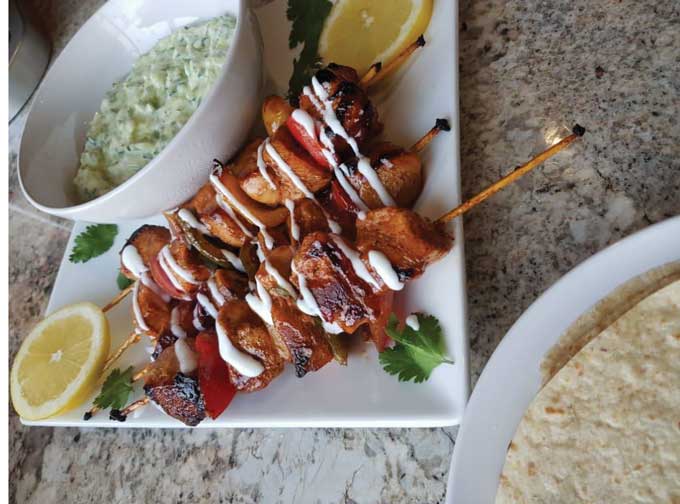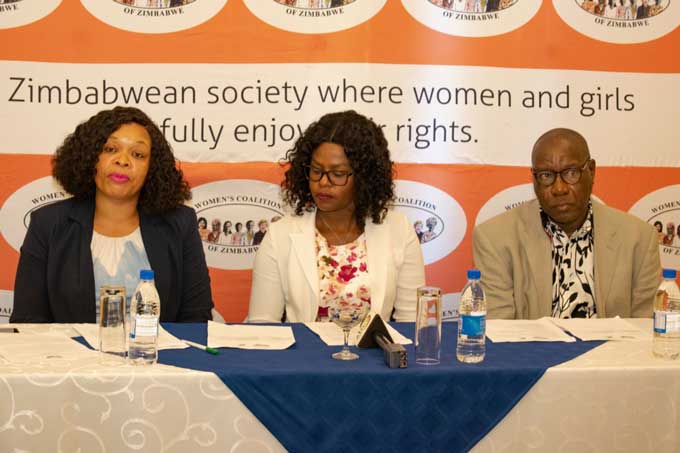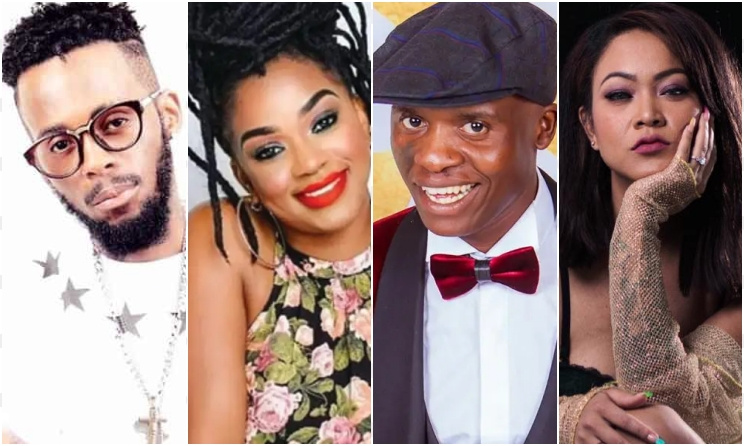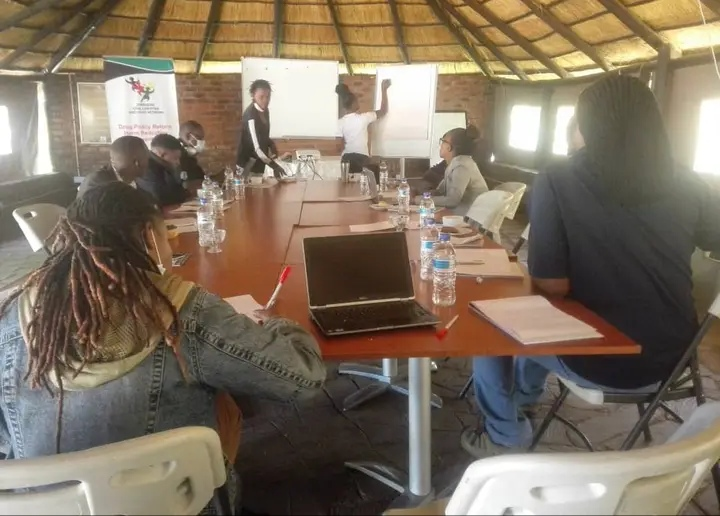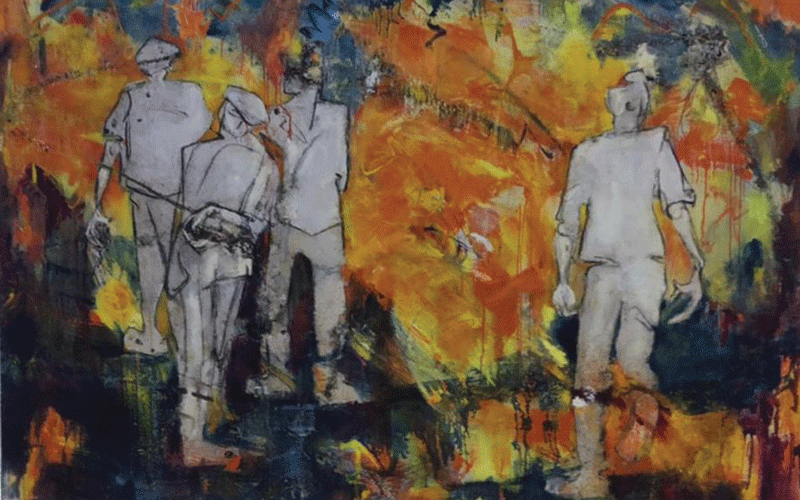
BULAWAYO-BORN visual artist Alison Baker (AB) cannot remember a time she did not ride. Her childhood was spent running wild through the African bush on foot and – mostly on horseback. An avid painter, her art exhibition titled “A Book That Cannot Be Read” is currently on display at the National Gallery of Zimbabwe (NGZ) and will run until February 2023. She talks to Khumbulani Muleya (KM).
Below are excerpts from the interview.
KM: How are you Alison, where did it all begin?
AB: I have always drawn and painted for the greater part of my life. I currently run an anti-poaching unit where we conduct patrols on horseback. My paintings are intrinsic to what I do and drawn from personal experience, also histories and layers of things that have happened before, perhaps I might say human interaction, seeing people respond and behave, it’s very much drawn from a sort of life experience. I'm concerned about the significant environmental harm that people are generating.
KM: You are an avid horse rider and painter, what came first between the two?
AB: We had free access to drawing and painting materials in my parents’ house. I was drawing and painting before I could write. But I suppose I could say both. We drew, painted and were encouraged to express ourselves.
KM: In what ways are you expecting A Book That Cannot Be Read to impact the audience?
AB: In a sense when one is making a piece of work, be it a sculpture or installation, one has one’s own message. However, we as individuals perceive everything slightly differently. Our experiences are different. Somebody else may look at a piece and take away a totally different impression which is good. I am not there to drum an idea into an audience, I’m there to say this is here, be aware of it and draw your own conclusions. I also want people to understand the joy and beauty of things. Despite everything, the world is actually extremely beautiful and very resilient, especially our country, it really is totally lovely. I also want to actually show what the field workers are up against, the monumental task that they face and what they achieve which is totally unsung. It’s to show the magnitude of these tasks.
- Daily life struggles reflected in Burning Figure
- Baker’s art work inspired by personal experiences
- NGZ to honour winning finalists
- Stage set for visual arts awards ceremony
Keep Reading
KM: At what point did you start to incorporate your anti-poaching insights and learnings into your artwork?
AB: The environmental impact and our negative impact on the environment and wildlife populations has always been a concern of mine. When I was given the freedom to create the exhibition by the NGZ, it made me think that there were things I wanted to say and this gave me an opportunity to work on a much broader scale.
KM: How do you create balance in any piece of art, what are some of the precepts that guide your creative process?
AB: Firstly I draw all the time. If you are an aspiring artist or writer, never be without your notebook. Draw or write down everything or any idea that comes to you, it’s always useful. A lot of my images and thoughts are part of what I see while on patrol, simply the way someone stands or moves, just a few lines that don’t need to be perfect can be the basis of a piece.
KM: Let’s talk about art as a medium of expression that can raise awareness for sustainable management of wildlife.
AB: I think the awareness comes from the youth, from the schools. It is extremely important that this awareness and understanding is brought to all youths because it changes their attitude. Art is a universal means of communication. By making a child understand and draw things it gives them a response and empathy to it. Our litter destroys a lot of animals. By encouraging people not to throw things away but to look at them as something that they can create and recycle. This is also where art comes in. In the writing and telling of stories. For the purpose of awakening a deeper understanding of the environment. Also artists themselves whether writers or visual artists can communicate this in a much more interesting way.
KM: Where do you draw your inspiration from?
AB: I am fascinated by histories. Also the earth itself, and just having an open mind and being interested in everything.
KM: Let's talk about how you grew to have a strong bond with nature and the wild from an early age.
AB: We spent a lot of time in Matopos. Our entire lives were spent outside, climbing rocks and understanding things and I suppose we were encouraged to view wildlife. We were very fortunate in our upbringing and were exposed to that at a very young age. We owned ponies and rode around the place. There are these marvellous, magnificent cave paintings that exist there as well which I do believe is such a significant part of all our culture.
KM: Let’s talk about your painting ‘Digital Reality’. What are your thoughts on technological advancements? How is it playing a role in the degradation of wildlife and human morality?
AB: It’s an interesting thought if you consider someone living in Africa a couple of centuries ago, or anywhere in the world. Today we probably see more different images in a day than they would see in a whole lifetime. Of those images, a lot of them are digitally manipulated, so we are seeing an altered reality that can be interesting but also bad. It can give a detached attitude to the real world. People should be encouraged to put down that phone a bit and touch reality.
KM: Lastly, would you closely associate painting with any form of poetry, does this genre influence you in any way?
AB: Poetry is a superb means of communication because it is highly disciplined. Meaning is concentrated into very few words that have a tremendous impact.
KM: Thank you for your time.
AB: You’re more than welcome.


